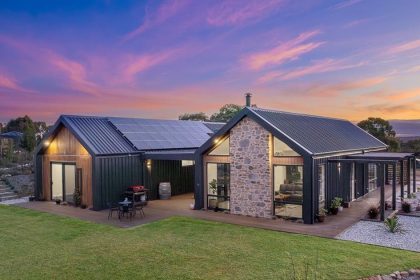Economists are hopeful for the future of home building after a boost in construction contracts sees shovels break ground across the country.
After spending months navigating the economic trenches thanks to consecutive interest rate hikes and labour shortages, the HIA’s recent Economic and Industry Outlook report has revealed that things might finally be looking up for Australia’s residential builds.
Now, nine months after the last RBA rate hike, Chief Economist Tim Reardon said that confidence appears to be returning to the market.
“Most housing markets appear to have reached or passed the trough in home building by mid-2024, following the fastest increase in the cash rate in a generation,” added Mr Reardon.
“States with good employment opportunities and relatively more affordable land are leading the charge.
“Against a backdrop of an acute shortage of housing, households are slowly returning to the new home market.”
Western Australia, Queensland and South Australia seemed to be already through the worst of it, with the number of contracts being signed for the construction of new homes steadily increasing since the start of this year.
Reardon also said market constraints that had been plaguing the industry since Covid were finally easing as the economy began to stabilise.
“Australia’s economic fundamentals have remained resilient to the rise in interest rates. Unemployment remains exceptionally low, the economy stable and population growth strong,” said Reardon.
“Material price rises are back to pre-pandemic levels and labour shortages have eased to some extent.
“These factors are setting the scene for an increase in home building later this year as confidence is restored.”
Overall, the sector was able to start construction on 25,890 homes in the first quarter of 2024, marking a 5.8 per cent increase on the previous quarter and putting activity on track to bring an end to the two weakest years for detached homes in over a decade.
Reports from Master Builders Australia seem to agree, with the July boasting a strong start to the government’s Housing Accord as building approvals rose by 10.4 per cent over June.
“These increases mean that detached home building approvals are running at their strongest level since October 2022,” said the group’s chief economist, Shane Garrett.
“The volume of higher density home building approvals hasn’t been this high since November 2023.”
A step in the right direction
Despite this unusually rosy outlook for the future of the industry, home builders aren’t out of the woods yet.
Even if Reardon’s predictions of 115,000 homes per year by 2026/2027 do come to fruition, those figures would still fall miles short of the needed 240,000 homes Master Builders predicts we need a year if Albo is going to make good on his ambitious housing promise.
According to CEO Denita Wawn, the industry will only be able to produce 831,000 of the 1.2 million new homes over the next five years.
“We cannot take the foot off the peddle when it comes to boosting housing supply and improving the investment environment for new projects,” she added.
The HIA’s report also pointed the finger at recent state government policies and tax laws that have slowed down the project pipeline with unnecessary red tape.
“This improvement in home building activity is not evident in New South Wales and Victoria where new tax imposts continue to impair home building,” said Reardon.
“Government policies continue to inflate the costs of land and construction in New South Wales and Victoria. Policy changes are also adding to market uncertainty delaying a return of investment into new home building and exacerbating the shortage of housing.”
With the nation still grappling with the ongoing housing crisis, Reardon called on state policymakers to walk back these decisions to decrease the cost of land and construction in the hopes of bringing in “greater home building volumes”.
“This increase in new home commencements could be accelerated if governments remove the market failures, tax imposts and constraints on the industry, or at least stop increasing housing taxes,” concluded Reardon.







